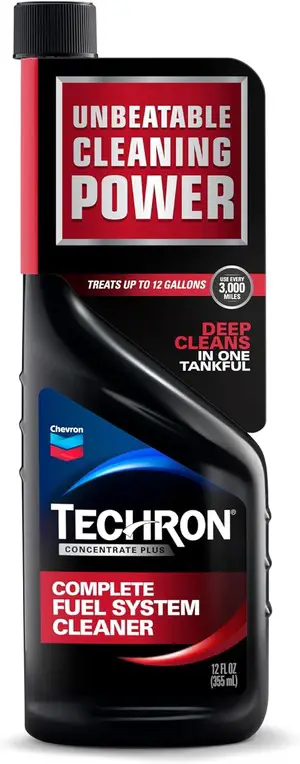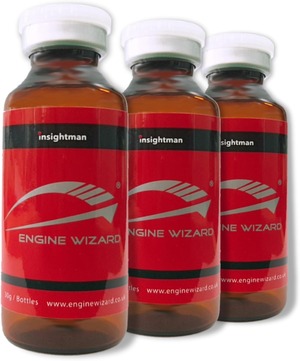6 Common Bobcat 763 Problems (Solutions Included)

In the fields of agriculture, construction, and landscaping, the Bobcat 763 skid steer is a dependable and adaptable piece of equipment. The company offers an ideal user experience by combining state-of-the-art features and high-quality building materials. It may nevertheless encounter issues that reduce output and lengthen downtime, just like any other equipment.
This post will discuss six Bobcat 763 problems that owners and operators could run into.
6 Common Issues with Bobcat 763
The Bobcat 763, with its 46-horsepower diesel engine, is one of the best skid steers available. Its four cylinders are designed to produce sufficient power to run the skid steer with accurate strokes. It can operate effectively and maneuver through confined spaces with ease thanks to its small size and agility.
It’s important to know the common issues that can arise when using the Bobcat 763 skid steer. Operator productivity is increased and downtime is reduced as a result of their ability to promptly detect and resolve problems.
1. Engine issues with the Bobcat 763 Skid Steer
Engine overheating and potential causes
Overheating is the engine issue that the Bobcat 763 skid steer encounters the most frequently. A few potential causes of this include a clogged radiator, low coolant levels, or a malfunctioning cooling fan.
Maintaining adequate coolant levels, cleaning and inspecting the radiator regularly, and ensuring the cooling fan is functioning correctly are all ways to prevent overheating.
Tips for troubleshooting power outages
It can be annoying to lose power when operating a Bobcat 763 skid steer. An unclean air filter, a broken fuel pump, or a clogged fuel filter could be the source of this issue.
To preserve the best possible engine performance, it’s critical to routinely check and replace these parts as necessary.
Starting problems and solutions
It’s not uncommon to experience difficulties starting the Bobcat 763 skid steer, particularly after it has been inactive for some time.
A dead battery, a malfunctioning starter motor, or a damaged ignition switch are examples of possible causes. Regular maintenance of the battery and electrical system, as well as prompt resolution of any starting issues, can prevent long-term downtime.
It can also be a problematic fuel solenoid switch that needs replacing.
2. Hydraulic System Problems and Troubleshooting
Leaking hydraulic fluid and possible sources
Hydraulic fluid leakage is a problem with the hydraulic system of the Bobcat 763 skid steer. Damaged hoses, loose fittings, or worn-out seals could all be to blame for this.
Hydraulic fluid loss can be avoided and optimal performance can be maintained by routinely checking the system for leaks and quickly replacing or repairing damaged parts.
Ineffective troubleshooting methods and hydraulic performance
Productivity may suffer if the Bobcat 763 skid steer’s hydraulic system performs poorly. A broken hydraulic pump, low hydraulic fluid levels, or a clogged hydraulic filter could be the cause of this problem.
To guarantee smooth operations, it is advisable to regularly check and maintain the hydraulic filter and fluid levels and to promptly address any performance issues.
Maintenance advice for hydraulic systems
Regular maintenance is crucial for preventing hydraulic system issues with the Bobcat 763 skid steer. This includes checking hoses and fittings for damage, replacing the hydraulic fluid and filter at the suggested intervals, and maintaining a clean, debris-free hydraulic system.
3. Electrical Malfunctions and Potential Solutions
Recognizing typical Bobcat 763 electrical issues
Electrical failures in the Bobcat 763 skid steer can result in several problems. Blowing fuses, loose connections, and malfunctioning switches are examples of common electrical issues. You can identify and fix any potential electrical problems more rapidly if you are aware of these typical issues.
Electrical connectivity problems: diagnosing and resolving
It is crucial to thoroughly inspect and test the electrical system when dealing with problems related to electrical connectivity in the Bobcat 763 skid steer.
To do this, you might need to use a multimeter to test components, replace damaged wires, and check connections. Identifying and fixing electrical issues in an orderly fashion will help restore functionality.
Issues with the charging system and batteries
The Bobcat 763 skid steer may also have issues with its battery and charging system. This may be due to a dead or weak battery, an alternator that isn’t working properly, or a voltage regulator that isn’t working properly.
It is possible to detect and resolve any possible problems before they become serious by routinely checking the battery, connections, and charging system.
4. Challenges With the Bobcat 763’s Drive Train
Like everything else in your Bobcat 763 skid steer, the drive train can occasionally have problems following a large meal. It’s like the heart and soul of the machine.
To avoid these issues growing into more significant headaches later on, it is imperative to recognize them early on.
Identifying drive issues and symptoms
Maybe it’s making weird noises or struggling to move smoothly. These could be signs of drive-train issues. Pay attention to any unusual vibrations, leaks, or changes in performance.
Addressing issues with the transmission
It serves as a translator between your engine and the wheels, so when it malfunctions, it’s like having a translator between your engine and the wheels.
Seeking the advice of an expert is advised if you think there may be transmission problems. They can identify the issue and tell you whether your transmission just needs minor maintenance or requires more extensive work.
Fixing issues with the drive motor and axle
Are one or both of the drive motors or axles on your Bobcat 763 skid steer having issues? Occasionally, these elements may become mischievous and result in a variety of headaches. It’s time to look into any unexplained noises, jerky or uneven movements, or weakness. Examine the area for any damage, leaks, or loose connections.
5. Issues Affecting Attachments and Accessories
The Bobcat 763’s accessories and attachments are like the spice of life. They simplify your life and increase its capabilities. But what occurs if these accessories start to cause issues? Let’s examine a few typical problems and their solutions.
Problems with attachment connection and functionality
Sometimes attaching accessories to your Bobcat 763 can feel the same way. Loose connections or faulty attachment points can make your workday frustrating. Check for any worn-out pins, damaged hoses, or misaligned couplers.
Malfunctions in auxiliary hydraulics and quick-attach systems
The quick-attach system and auxiliary hydraulics are comparable to the high-tech components on your skid steer. However, occasionally, these devices may malfunction and leave you baffled.
Look out for any leaks, stuck valves, or controls that don’t work. To make sure these systems function properly, routine maintenance and inspections are essential.
Advice on how to care for and fix different attachments
Your Bobcat 763’s unsung heroes are its attachments. To finish the task, they put forth endless effort. If you treat them well, they will reciprocate with faultless performances.
Make sure your attachments are clean and well-lubricated, and periodically check them for signs of wear and tear.
6. Black and White Smoke
When using a skid steer, both black and white smoke are typical. The skid steer emits black smoke when the engine isn’t getting enough air. In these conditions, you must ensure that the air filter is free of impurities and replace it as necessary.
Alternatively, a head gasket could be the cause if Bobcat 763 is producing white smoke. Sealing the engine head from the block is the job of the head gasket. Sealing the water and oil passages is its responsibility.
White smoke will therefore emerge from the exposed air in the water and oil passages caused by a blown head gasket. The only thing to do is replace the head gasket. Check the engine’s coolant level as well, as low coolant can lead to the gasket blowing off.
Make sure that there is no overheating. Test the cooling fan and the pulley. It’s not rare that the cooling fan pulley tensioner can get worn out so get that replaced if you notice it’s not doing a good job.
How to Know When to Change the Engine Oil on Your Bobcat 763
Maintaining the engine oil on your Bobcat 763 is crucial to keeping it running smoothly and extending its lifespan. Here are some clear indicators that it might be time to change the oil:
- Operating Hours: The Bobcat 763 generally requires an oil change every 250 hours of operation. If you keep track of your hours on the job, this is one of the most reliable indicators that it’s time to swap out the oil.
- Oil Condition: Check the color and consistency of the oil using the dipstick. Fresh oil should be a clear amber color. If the oil appears dark, thick, or has a burnt smell, it’s definitely time for a change.
- Engine Noise: If you notice that the engine is running louder or has a slight knocking sound, it might mean the oil is losing its viscosity and isn’t providing adequate lubrication.
- Warning Lights: Some Bobcat 763 models come equipped with an oil pressure warning light. If this light comes on, it’s a sign that either your oil level is low or the oil itself is not in good condition.
- Elapsed Time: If the machine hasn’t reached 250 hours of use but it’s been six months since the last oil change, it’s a good idea to replace it. Oil degrades over time, even if the machine isn’t in heavy use.
Steps to Change the Engine Oil on Your Bobcat 763
Changing the oil on your Bobcat 763 isn’t too complicated, and you can do it yourself with the right tools and a bit of know-how. Here’s a step-by-step guide to help you through the process:
Tools and Materials Needed
- 10W-30 engine oil
- New oil filter
- Oil filter wrench
- Drain pan
- Funnel
- Degreaser (to clean the oil after changing)
- Clean rags or paper towels
- Wrenches or socket set
- Optional: Engine oil tester to test the quality of the oil before and after change.
Step 1: Warm Up the Engine
Start by warming up the engine for about 5-10 minutes. This helps to thin the oil, making it easier to drain out completely. Make sure to park your Bobcat 763 on a level surface before you begin.
Step 2: Locate the Oil Drain Plug
Find the oil drain plug, which is typically located at the bottom of the engine. Place your drain pan directly beneath the plug to catch the old oil. Be careful, as the oil can be hot.
Step 3: Drain the Old Oil
Use a oil filter wrench to loosen the drain plug and allow the old oil to drain out completely. It’s a good idea to let it drain for a few minutes to ensure that all the old oil has left the engine. Once done, clean the drain plug and screw it back into place securely.
Step 4: Remove and Replace the Oil Filter
Using an oil filter wrench, remove the old oil filter by turning it counterclockwise. Before installing the new oil filter, apply a small amount of clean oil to the rubber gasket on the filter. This helps to create a better seal. Screw on the new filter hand-tight, then give it an extra quarter turn to ensure it’s secure.
Step 5: Refill with New Oil
Locate the oil fill cap on the top of the engine and remove it. Using a funnel, pour in the new oil (typically about 7-8 quarts for the Bobcat 763, but check your owner’s manual for the exact amount). Be sure not to overfill.
Step 6: Check the Oil Level
After refilling, use the dipstick to check the oil level. Make sure it’s within the recommended range marked on the dipstick. Add more oil if necessary, but do so gradually to avoid overfilling.
Optional: You can use an engine oil tester which inspects the quality of the oil.
Step 7: Run the Engine and Recheck
Start the engine and let it run for a couple of minutes. This helps the oil circulate through the system. Shut off the engine and wait a minute or two, then check the oil level one more time with the dipstick, topping off if needed.
Step 8: Dispose of the Old Oil Properly
Make sure to dispose of the old oil and the used oil filter at a recycling center or an auto parts store that accepts used oil. Never pour it down the drain or dispose of it in regular trash.
Safety Issues and Bobcat 763 Maintenance Advice
The importance of safety when using your Bobcat 763 skid steer cannot be overstated. Similar to riding a bike, it may not seem fashionable, but donning a helmet can save your life.
To keep you and your machine operating at peak performance, let’s discuss some safety issues and maintenance advice.
If you’ve had your Bobcat 763 for around 2-3 years, I would recommend replacing all the main switches as they are important during prolonged working hours so if one fails you can lose a lot of time. These are the ones I often replace on my machines so I can be worry-free that they won’t fail:
Safety guidelines and preventative measures
The top priority should always be your safety. Wearing the proper personal protection equipment, such as gloves, safety glasses, and a helmet, is important.
Read the operator’s manual carefully, adhere to the recommended operating procedures, and pay attention to your surroundings.
Regular maintenance routines for optimal performance
Your Bobcat 763 requires routine maintenance to stay in good working order, just like your car needs oil changes on a regular basis to keep its engine running smoothly.
Plan routine maintenance, check for leaks, maintain proper fluid levels, and replace worn-out components.
The significance of operator awareness and training
There is more to operating a Bobcat 763 than meets the eye. It calls for expertise, understanding, and a sharp sense of potential dangers.
You can become a more proficient operator and protect the safety of people around you by investing in operator training and ongoing skill development. Remain vigilant, recognize the limitations of your device, and never give up learning.
Suggested Resources About the Bobcat 763 Issues
Finding online forums and communities for troubleshooting
The internet is a treasure trove of information, and chances are, someone else has faced a similar issue to yours.
To share advice, solve problems, and gain insight from others’ experiences, join online forums and communities devoted to skid steer enthusiasts. For Bobcat owners, it’s similar to having an online support community.
Tips for DIY repairs and maintenance
There’s no shortage of do-it-yourself resources for those of you who prefer to get your hands dirty and embrace your inner mechanic.
You can get step-by-step instructions for common repairs and maintenance tasks from YouTube tutorials to comprehensive guides. Do-it-yourself projects are fantastic, but always put your safety first and know when to hire professionals.
Thoughts on the Bobcat 763 and its Maintenance
An overview of the typical issues that your reliable Bobcat 763 skid steer may run into. Keep in mind that maintaining the proper operation of your machine only requires a little TLC. Remain vigilant and safe.
In conclusion, even though the Bobcat 763 skid steer may run into a variety of issues, it’s critical to keep in mind that the majority of them are fixable with the right knowledge and preventative maintenance.
The longevity and effective operation of this potent machine depend heavily on routine maintenance, adherence to safety procedures, and, when needed, professional assistance. Users who have read this article can confidently take on any problems that may arise with their Bobcat 763 skid steer.
Keep Your Mower Healthy
|
Chevron Techron Concentrate Plus Fuel System Cleaner 
Shop Now
|

Shop Now
|
Engine Oil Additive, Engine Treatment, Wear & Tear Protection for Gasoline & Diesel 
Shop Now
|
FAQs
How good of a machine is a Bobcat 763?
For a number of crucial jobs, the Bobcat 763 is a great instrument. An attachment like a bucket, chipper, digger, etc. can be used with the Bobcat 763. Landscaping, building, farming, and other uses are among its many uses. It is perfect for trench digging, grading, and material loading.
What is the recommended frequency of maintenance for my Bobcat 763 skid steer?
For your Bobcat 763 to operate at its best and last a long time, regular maintenance is required. The manufacturer’s instructions should be followed, and regular maintenance procedures like fluid checks, filter replacements, and lubrication should be carried out at the suggested intervals or hours of use.
What measures can I take to make sure my Bobcat 763 skid steer operates safely?
The controls, safety features, and operating procedures of the machine should all be familiar to operators through appropriate training in order to guarantee safe operation. To prevent accidents and ensure safety, regularly inspect the equipment before each use, adhere to all safety instructions, wear the proper personal protective equipment, and be aware of your surroundings.
What battery does the Bobcat 763 use?
The Bobcat 763 uses a 12V, 70Ah deep cycle lead-acid battery in a group 24 size format.
What engine oil does the Bobcat 763 use?
The Bobcat 763 skid steer loader requires 5.3 quarts (5 liters) of 10W-30 semi-synthetic engine oil.
What hydraulic fluid does the Bobcat 763 use?
Bobcat 763 uses ISO 46 All-Weather hydraulic fluid. The recommended capacity is 14 liters.
What engine coolant does the Bobcat 763 use?
The Bobcat 763 uses a 50/50 mixture of ethylene glycol and water as the engine coolant.
Related Post:
- 6 Bobcat S590 Problems – Troubleshooting and Solutions
- 7 Common Bobcat S250 Problems (Complete Solutions)
- 8 Common Bobcat S185 Problems (Complete Solutions)
- 8 Common Bobcat CT1025 Problems (Complete Solutions)
- 9 Common Bobcat T770 Problems (Complete Solutions)
- 6 Common Bobcat T66 Problems (Complete Solutions)
For more outdoor vehicle problems solutions visit here and for more guides related to mowers visit Mowers Guide

